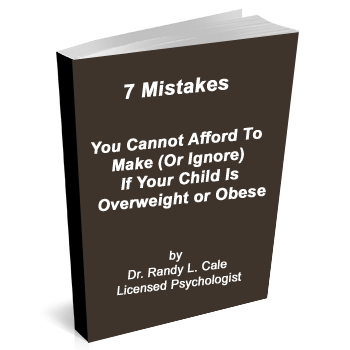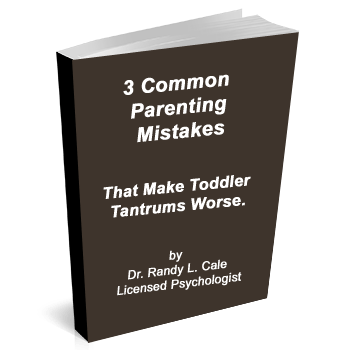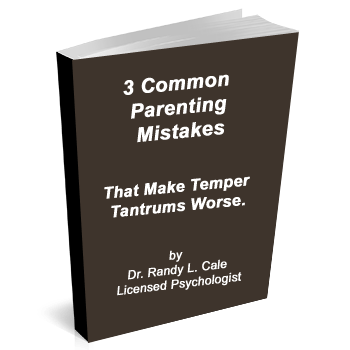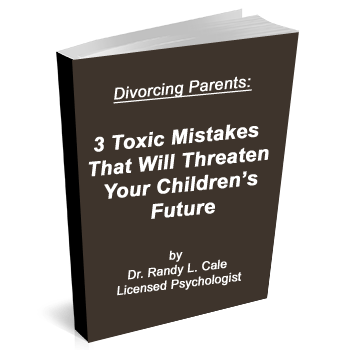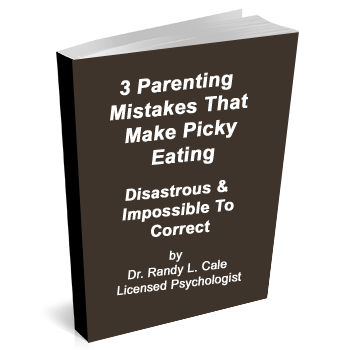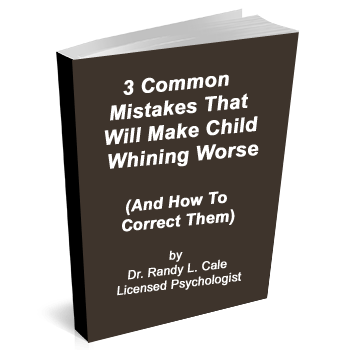See Full Video of Seven Mistakes Here
Video Transcription:
Dr. Randy Cale presents…Seven Mistakes!
I hope not to do that… Folks we’re going to talk about seven mistakes you can’t afford to make. And you know I was driving here and I’m often trying to think about like what’s a good introduction to this and it suddenly reminded me in my early 20s I made one of those cross-country trips you know where you often venture out and you take several weeks to travel across the country. And so I don’t know it was like in week first week maybe about the fourth or fifth day and we’re traveling through Tennessee and we end up kind of getting lost. So I stopped at this little gas station and I asked the fellow there at the gas station I said you know here’s where we want to go we want to get back to the interstate
Such and such and he just kind of paused and he looks at me and he goes so he says you ain’t going to get there going that way and so you know I said okay so I guess we turn around and go this way and he goes nope you ain’t gonna get there going that way.
Now, there were only two options so I became a little bit concerned and he said to me says you know you’re just a long way from where you want to be. Well, I hope you guys don’t have that experience tonight. In other words, as I’m talking about the seven mistakes that you can’t afford to make. Also want to give you a sense of which way you need to go to stay away from those mistakes. But sometimes when I’m doing this presentation, folks kind of raise that issue upfront or I’ll get an email or two. Like well, you’re going to talk about what you do instead and of course, that’s the goal here. I want to make sure that you guys have a clear sense that if these are the mistakes. Here’s what you do to avoid that and here’s what you can do instead.
A couple of months ago, I was driving home and going down the uh driveway through the subdivision you know and squirrels were out in the road and so I’m going along and usually where they get out of my way of course and but there’s one squirrel that kind of is sitting there in the middle of the road and he sees me coming and it’s a little too late for me to stop and so he sees me and he goes one way then he goes the other way and then he goes the other way and I’m I don’t have time to hit my brakes and I’m running over him and I’m just waiting for that sump but there’s no thump.
So, I’m thinking…lucky squirrel right. Well, this is kind of some this is kind of the way we learn sometimes we will end up in a problem situation we move one way we’ll try this we try that we try this is right and then we sneak out just by hair we get out of it and we think ah we could be like the squirrel we could think this is the solution when I’m in a light threatening situation right. I dart one way, I dart the other way, I dart back and forth a couple of times and then that’s the way out well that strategy works sometimes you know we often see these dead squirrels sitting around so hopefully as we’re talking about this tonight that I give you a sense of how it is you
stay away from that kind of decision-making strategy meaning here’s life’s coming at you and you don’t know what to do so you try this one.
Well, I’ve I heard somebody tried this I heard that somebody did this I wonder if this will work and you try different things and what happens is sometimes people get lucky so your neighbor might be saying you know I did this and then I did this and then I did this and it worked well. There are certain rules of behavior, there are certain laws, certain principles that will predictably and reliably influence your kid’s behavior and so I want to give you a sense of what those rules and principles are and I want to do that by talking about the key mistakes that I see parents make along the way.
The first mistake that is often made is fairly common and it looks something like this: let’s imagine for a moment that John is sitting over here and he’s watching TV and it’s time for dinner and I’m saying to John I’m putting dinner on the table and say John sweetheart it’s time for dinner please cut off the TV and then a few minutes later John’s still sitting there watching TV right so I said John please cut off the TV sweetheart a few minutes later I’m considering things are on the table John’s still sitting there and going john come on cut off that TV and I come back in sitting down John’s still in front of the TV any of you have john in your house yeah okay. So, John’s still sitting in front of the TV so what do I do? I go in and now I’m really upset so I’m going john what is your problem? Do you know every day I do this why is it every single day we have to do this? I am so tired of yelling at you about cutting off the TV now just cut off the TV so I come in I work myself up in a sweat… right? You know John’s still sitting in front of the TV oh I’m furious right? So, now I come in and I lay into john I’m just like spit’s fine my face is red. You know john’s sitting there looking shell-shocked and eventually the TV gets turned off and he comes to dinner and of course, we’ve got a nice pleasant mood set for the dinner table right?
So, you know what I’m asking of John is I’m asking of john I’m saying to him something like this I’m saying sweetheart what I want you to do is I want you to stop doing what you want to do and do what I want you to do right? That’s the message John is engaged in watching a program he enjoys he doesn’t want to come to dinner. So I’m saying accept this fact that you’re not getting what you want John and just do what I’m asking you to do right? I’m asking John to accept reality. The reality is you can’t always get what you want but look at me what am I doing? I’m am I getting what I want from John? No so when I don’t get what I want from john. What do I do? Scream yeah throw a tantrum right? So here I am modeling for John that when I don’t get what I want I give myself permission to scream and yell and spit in your face right now how is John not going to get this as he grows up how is he not going to get that when he doesn’t get what he wants in life that the solution is to scream and yell and come back relentlessly getting louder each time right because that’s what I did I went from soft to medium to loud to the extra valve and so the first mistake that we make is that we think that we’re going to control the home we think we’re going to control John and we haven’t learned to control ourselves.
Now, I gave you an example of the kind of working my way up gradually. Now, some of you may know someone, not any of you, of course, some of you may know someone who can go from here to here very rapidly you know so you ask once, and by the second time, they’re screaming and yelling at John because they’ve been doing this 427 days before every day John is sitting there and they’re sitting and going I know that boy is not going to come to the table you know and so I’m ready and so I explode. So, the problem here is this that there’s not a single parenting book, there’s not a psychologist, there’s nobody that you can take John to that if I model for John as he’s growing up that this is the way that I’m going to parent that my solution to him not listening is to yell and scream and lose my temper. I’m sunk there’s nothing I can do because I’ve taught John the formula you guys all already know that your words are cheap compared to your action right? I mean you don’t need me to tell you that so if my action is that I keep doing this over and over and over, I won’t be able to escape this.
In other words, you’ll see on your outline there one of the points that I make is that you cannot escape what you model. There’s just no way around it and so that’s the first mistake is that we model the very behavior we don’t want and expect to get the behavior we do want we expect John to respond by listening when he’s not getting what he wants and here I am throwing a fit when I don’t get what I want there’s no way around this that makes sense.
So, the key here is to make sure that we model what we want John to be able to do we want to model that when we don’t get what we want we can keep our calm. By the way, you guys all know this as well it’s so easy to keep your calm when things are going well right? If you’ve got perfect kids and I have parents who come and say this to me, they’ll say you know if I had better kids I’d just be a better parent. That’s so true right if John would just come
and come to the table when I asked him I wouldn’t have to yell and scream and look like an idiot right? So, the key here is that it doesn’t work that way though I have to lead I have to show by example. I have to be the model for John about how to do this. Now, granted if I don’t have any tools in my parenting toolbox for how to teach John to cut off the TV when I ask him the first time that I’m going to feel kind of frustrated.
So, the goal here though as a first step is to make sure I’ve got control here first because I will guarantee you if you have a home that feels chaotic and out of control if it really feels like things are desperate the first thing that you have to do is just stop all the yelling into mandy. The first thing that you do and you’ll find not everything will get better. It’s not pretending but it will get better just by you modeling different behavior and showing John that you aren’t going to lose your cool. So, the first mistake is we cannot engage in the behavior we don’t want and expect to get the behavior we do want makes sense right.
Let’s imagine I’m going I’m going to take John for a walk in the woods right and I this is a metaphor for life because as you guys have different John at different ages right and if we’re going for a walk and this is a metaphor this walk in the woods as a metaphor for life I’m going to pick a path for John to walk that’s right for his age I’m not going to make it too difficult but I’m going to make it a little bit challenging for John so as we’re walking down this path John happens to be the very distracted kind of child he gets interested in a lot of things and he doesn’t necessarily listen to me very well. So, as we’re walking along I’m looking there’s a gully where the path is washed down a little bit and I say john sweetheart be careful don’t try to Jump that because if you do you might trip and fall and I don’t want you to get hurt so John’s going along and he just isn’t paying attention he kind of reaches over this golly, of course, he doesn’t quite make it. John’s going down and I see him going down so here I go sprinting right? I catch john when he’s about this close to the ground and I say John sweetheart here let’s talk about this you got to listen to me sweetheart you gotta pay attention. My job is to protect you so if you listen to me you’ll stay safe but if you don’t listen you’re gonna get hurt so pay attention. So, off we go down the path right we keep walking and then there’s some a tree limb that’s falling across the path I said John be careful on that tree them right.
So, John goes up he hears something down in the woods he’s just walking along not paying any attention stumbles across the tree limb right down goes John here I go sprinting as hard as I can and I catch john again right before he hits the ground and I give him another good talk I say john buddy you got to pay attention if you don’t listen you’re going to get hurt. My job is to protect you listen to dad you’ll be safe right. Off we go we come across a stream some wet rocks some dry rocks I say to John of course put your feet on the dry rocks otherwise you hit the rut rocks what’s going to happen and slip and fall so John gets up to the stream he’s not paying much attention or he doesn’t believe me who knows but he puts his feet on the wet rock…






